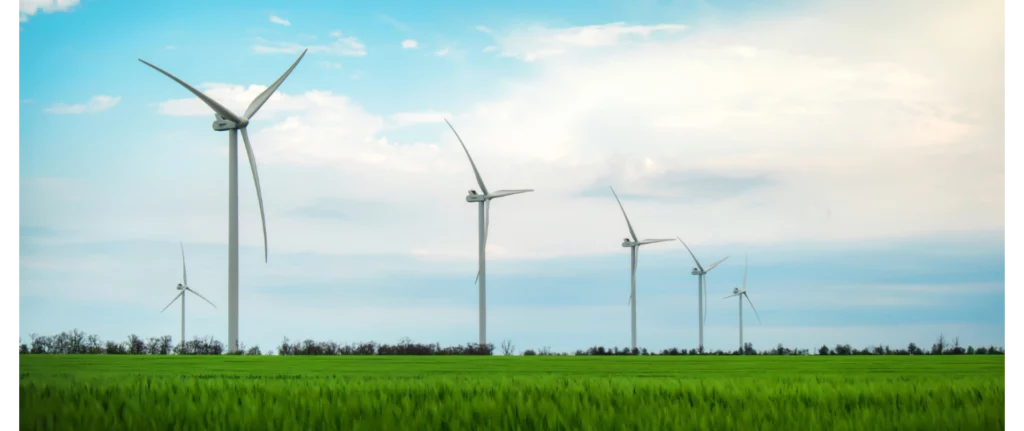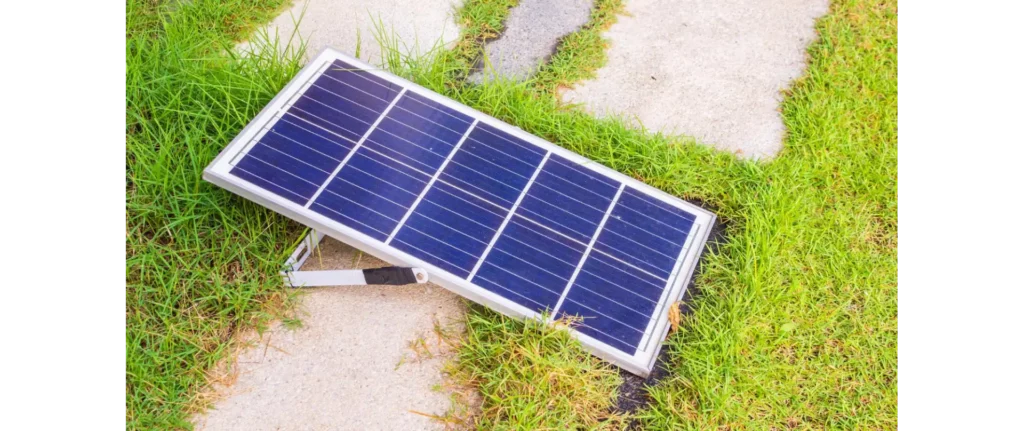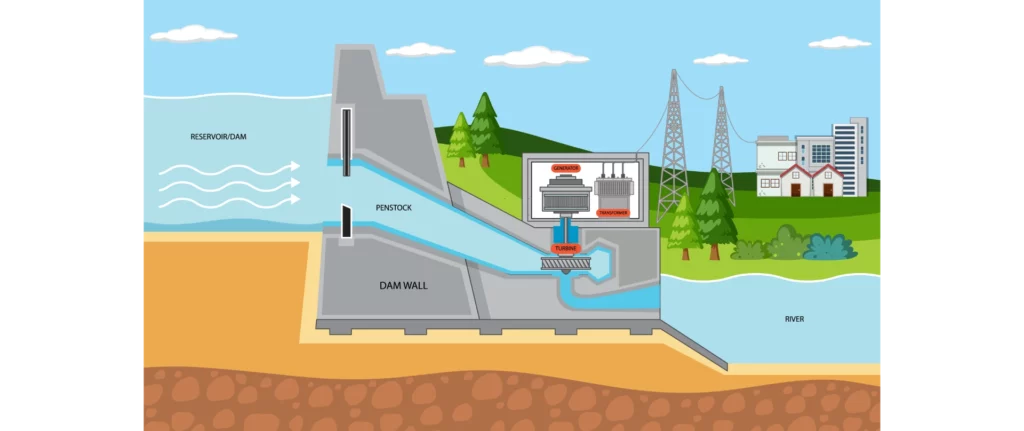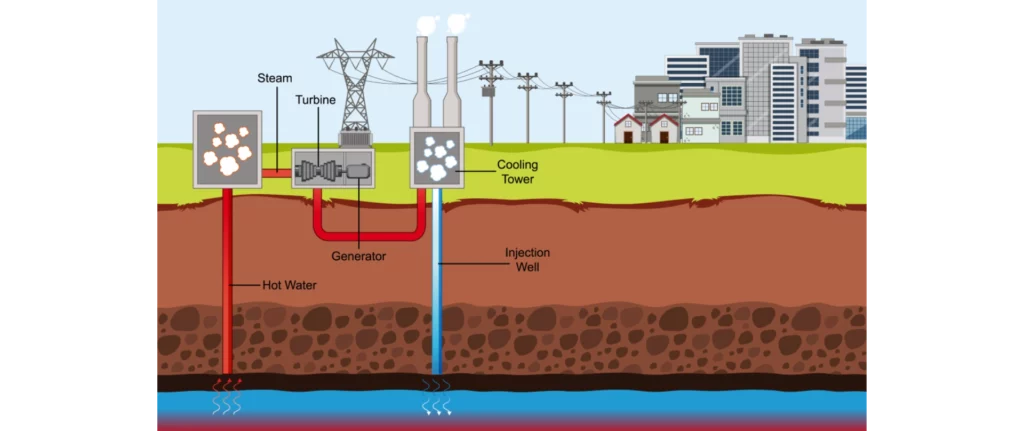Examples of Renewable Energy Projects
Exploring the realm of renewable energy reveals a landscape rich with opportunities for innovation, cost savings, and environmental preservation.
As global consciousness shifts towards sustainability, investments in renewable energy projects are not just economically savvy but pivotal for ecological balance.
The U.S. Department of Energy (DOE), through its partnerships with National Labs, the private sector, and academia, spearheads the transition to alternative energy, underpinned by funding from the U.S. Congress.
This deep dive into renewable energy showcases the diverse array of projects that are lighting the way to a sustainable future.

Wind Energy: The Power of Breezes and Gales
Wind energy stands as a testament to humanity's ingenuity in harnessing nature's forces.
The potential to extract power from the wind far exceeds current global energy demands, presenting an avenue for substantial growth.
Nevertheless, the variability of wind speed underscores the complexity of maximizing wind energy's potential.
The economics of wind energy, encompassing turbine construction, financing, and operational costs, necessitate meticulous planning and execution.
Case Studies and Advances:
- Texas and Iowa Wind Projects: These states are at the forefront of wind energy in the U.S., with significant contributions to the national grid. Their success stories exemplify how strategic investments and favorable policies can amplify wind energy's impact.
- Residential Wind Turbines: Smaller in scale but significant in impact, residential turbines offer a gateway for individuals to contribute to the renewable energy landscape. Incentives across various states make this option increasingly viable, underscoring the shift towards decentralized energy production.

Solar Energy: Radiant Solutions for a Brighter Future
Solar energy's versatility, from photovoltaic panels to solar thermal systems, positions it as a cornerstone of renewable energy.
Recent approvals of large-scale projects in California highlight the federal commitment to expanding solar infrastructure, reflecting a broader trend toward embracing solar technology for its reliability and scalability.
Solar Innovations and Projects:
- Utility-Scale Solar Initiatives: The push for large-scale solar farms, capable of powering thousands of homes, illustrates the ambitious scope of solar energy deployment. These projects, supported by government plans like the Desert Renewable Energy Conservation Plan, are critical for achieving renewable energy targets.
- Community and Residential Solar: Beyond utility-scale projects, solar energy thrives on rooftops and in communities. These smaller-scale implementations play a crucial role in democratizing access to renewable energy, enabling households and localities to partake in the green transition.

Water: Harnessing Hydro Power in New Ways
The exploration of marine and hydrokinetic energy unveils untapped potential in the world's waterways and oceans.
Innovations in capturing the energy of flowing water, whether through traditional hydroelectric plants or novel marine energy devices, promise a sustainable supplement to terrestrial renewable energy sources.
Water-Based Renewable Ventures:
- Coal Mine Water Heating: By repurposing the thermal energy of water in abandoned mines, projects like the South Seaham Garden Village offer a glimpse into renewable energy's innovative applications, blending historical industry with modern sustainability.
- Marine Energy Potential: The development of devices that can withstand and exploit marine environments for energy generation is a frontier of research and investment, aiming to diversify the sources of renewable energy.

Geothermal Energy: Tapping the Earth’s Heat
Geothermal energy's reliability and low operational costs make it an attractive option for long-term investment in renewables.
Despite its modest footprint in the current energy mix, geothermal power's ability to provide consistent energy from the Earth's heat holds promise for expanding renewable energy's reach.
Geothermal Developments:
- Global Leadership and Examples: Countries like Iceland demonstrate geothermal energy's potential to meet a significant portion of energy needs, inspiring similar initiatives worldwide.
- Federal Incentives and Support: In the U.S., geothermal projects benefit from a suite of incentives aimed at encouraging exploration and development, highlighting the government's role in fostering renewable energy sectors.
Looking Ahead: The Renewable Energy Horizon
The journey towards a fully renewable energy grid is complex and multifaceted, involving technological innovation, policy reform, and societal participation.
As we delve deeper into the possibilities offered by wind, solar, water, and geothermal energy, the path to a sustainable and energy-secure future becomes clearer.
Strategic Implications:
- Investment and Infrastructure: The expansion of renewable energy projects requires significant capital investment and robust infrastructure development. Public-private partnerships and international cooperation are pivotal in scaling up renewable energy solutions.
- Environmental and Economic Benefits: Beyond reducing carbon emissions, renewable energy projects contribute to economic development, job creation, and energy independence, underscoring the multifaceted benefits of transitioning to sustainable energy sources.
Conclusion
The exploration of renewable energy projects illuminates a path forward that is both sustainable and economically viable.
By investing in a diverse array of renewable energy sources, societies can mitigate environmental impacts while fostering economic growth and energy security.
The stories of successful projects across wind, solar, water, and geothermal energy not only inspire but also guide the global community towards a more sustainable, renewable-powered future.
As we continue to innovate and invest in renewable energies, the vision of a cleaner, greener planet becomes an ever-closer reality.
Source:
A comprehensive study of renewable energy sources: Classifications, challenges and suggestions

